Food and Drink: Did You Know?
Sweet IdeaThe Spanish were the first to sweeten bitter cacao beans using cane sugar and cinnamon. First considered a luxury item in Spain, only royals and the elite could afford the New World import called chocolate. ▶ |
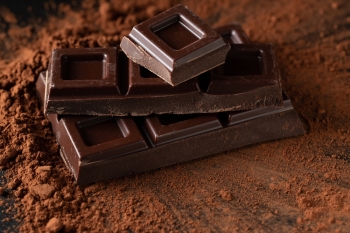 |
Popular TapasIn Spain, a popular style of eating is tapas, which are a variety of small dishes both hot and cold. Tapa, which means "cover", was originally a slice of ham or cheese placed over a drink. Among the country's popular tapas options are mixed olives, garlicky shrimp, fried baby squid, and meatballs. ▶ |
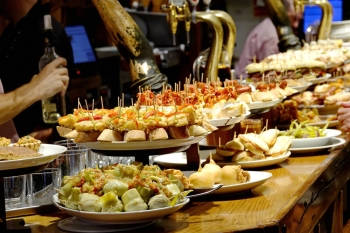 |
Tasty TurnoverEmpanadas, baked or fried turnovers filled with meat, cheese, or other ingredients that have become popular around the world, originate in Galicia, in northwestern Spain .▶ |
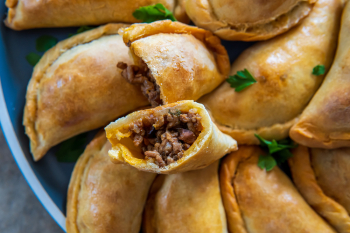 |
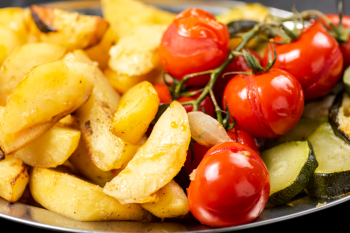 |
Imported Items◀ Many foods came to Spain through New World explorers. They brought tomatoes, beans, potatoes, chile peppers, vanilla, and chocolate to the country on return voyages. |
Moor FlavorThe spices cinnamon, saffron, and nutmeg arrived in Spain through the Moors, who also brought the country rice. The Moors ruled Spain for about 400 years. ▶ |
 |
PaellaThe original recipe for the Spanish rice dish, paella, did not include seafood, which is now a popular version. The meat ingredients were rabbit, chicken or sometimes snails. Originating in the Valencia region, paella was originally farmers' and farm laborers' food, cooked by the workers over a wood fire for the lunchtime meal. ▶ |
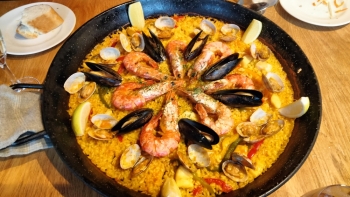 |
Olive OriginsThe Phoenicians brought olives—and the resulting olive oil—to Spain about 1000 BCE. Olives are a key part of Spanish culture and cuisine, and are eaten in many ways. Spain grows nearly 300 different types of olives, and produces nearly 50 percent of the world’s olive oil. ▶ |
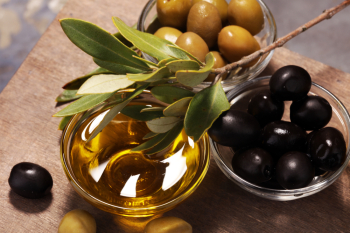 |
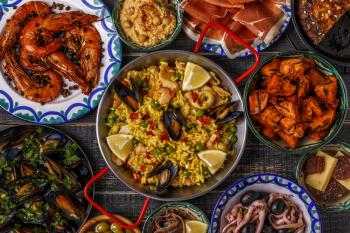 |
Delicious Diversity◀ Spanish cuisine is considered one of the most diverse in the world, due to the country’s many distinct regional dishes and centuries of foreign influences. |
Spanish SherrySherry, a fortified wine made from white grapes, is distinctly Spanish. It is originally from an area in Andalusia, which has a trademark on the brand, similar to French Champagne. ▶ |
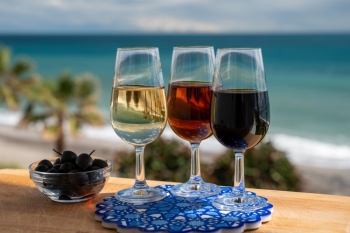 |
Simply PutThe most popular form of coffee in Spain is café con leche, an espresso mixed with scalded milk. ▶ |
 |
A Tradition of FishSpain has the second-highest fish consumption per capita in Europe, after Portugal. Coastal regions, especially the north, have a long tradition of seafood dishes, reflecting the country's extensive coastline. ▶ |
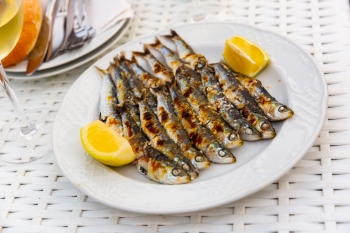 |
 |
Pimientos de Padrón◀ Small green peppers from Padrón are typically fried in olive oil and served with coarse salt. Some peppers are hot, and some are not, leading to the popular Spanish saying, "Pimientos de Padrón, unos pican y otros no" (Padrón peppers, some are hot and some are not). Colloquially this has come to be almost a proverb, meaning, “you win some, you lose some." |
Christmastime TreatA traditional Christmas dessert in Spain, turrón is a nougat made from almonds, honey, sugar, and egg white. It has Moorish origins, believed to have arrived in Spain during the Moorish invasion of the eighth century, when Arabic people brought along their traditional sweet recipes. Turrón has been made in the town of Jijona in Alicante since the 16th century. ▶ |
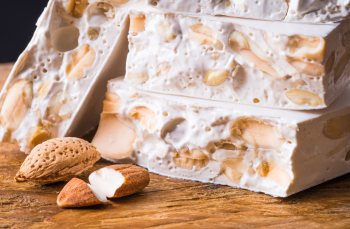 |
Jamón IbéricoJamón Ibérico is a world-famous cured ham that comes from free-range Iberian pigs. The highest quality, known as Jamón Ibérico de Bellota, is from pigs that roam oak forests and eat only acorns. ▶ |
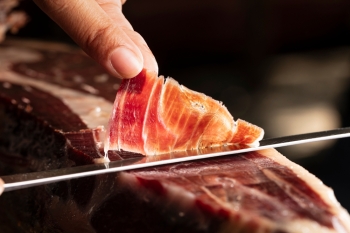 |
GazpachoThis cold soup made from tomatoes, cucumber, bell peppers, onions, garlic, olive oil, and vinegar originated in the southern region of Andalusia. It is believed that the dish was originally eaten by Roman road builders as a way to cool down and stay nourished during hot summer months, or traces to farmers who ate it for the same reasons. ▶ |
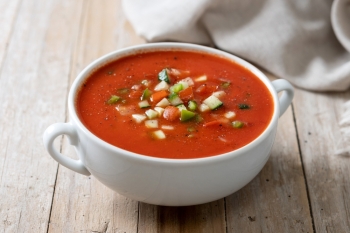 |
Copyright © 1993—2024 World Trade Press. All rights reserved.

 Spain
Spain